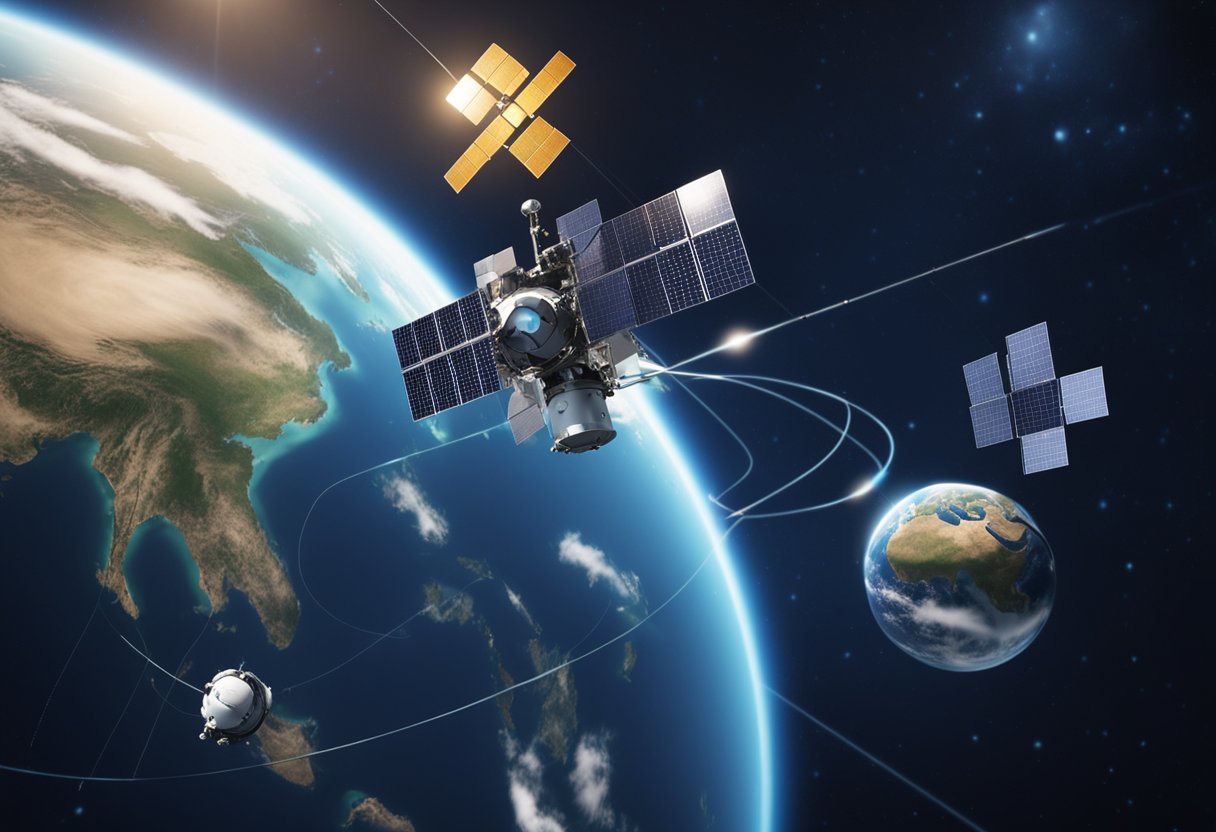
Space Technology Transfer to Developing Economies – The transfer of space technology to developing economies is an unfolding narrative that holds promise for transformative growth and development. As we scrutinise this phenomenon, it becomes apparent that such transfers are not merely about providing advanced technology but also about equipping these economies with innovative tools for problem-solving.
With the support of international agencies, including the Organisation for Economic Co-operation and Development (OECD), technology transfer is being tailored to address specific developmental challenges ranging from health to agriculture.

The transfer process is multifaceted, involving legal and intellectual property considerations alongside fostering innovation and entrepreneurship within the space sector. These transfers help create a foundation for robust economic development, reinforcing the essential relationship between space exploration and terrestrial benefits. As we contend with global issues such as energy, environmental management, and the need to enhance security, the knowledge and applications derived from space technologies offer concrete solutions that resonate within the socio-economic fabric of these burgeoning economies.
Before examining the intricacies of space technology transfer, it’s essential to acknowledge its role in driving innovation and fostering commercialisation in developing economies. We see that the fundamental purpose is to use advancements in space technologies to catalyse economic growth and development.
The concept of technology transfer is anchored on the foundation of sharing innovations from the domain of space research with various sectors. The primary goal is to enable these advancements to be adapted for practical applications that can stimulate development. For instance, satellite communication technologies initially developed for space missions are now integral for rural connectivity in remote areas. We recognise two key principles in this endeavour:
The mechanisms for transferring space technologies to developing economies typically involve several methodological steps, which include but are not limited to:
In our experience, the transfer is not merely transactional but is also about building capacities within these economies to utilise and innovate upon these technologies. It is through this continuous cycle of innovation and transfer that the true value of space technologies in fostering economic growth becomes evident.
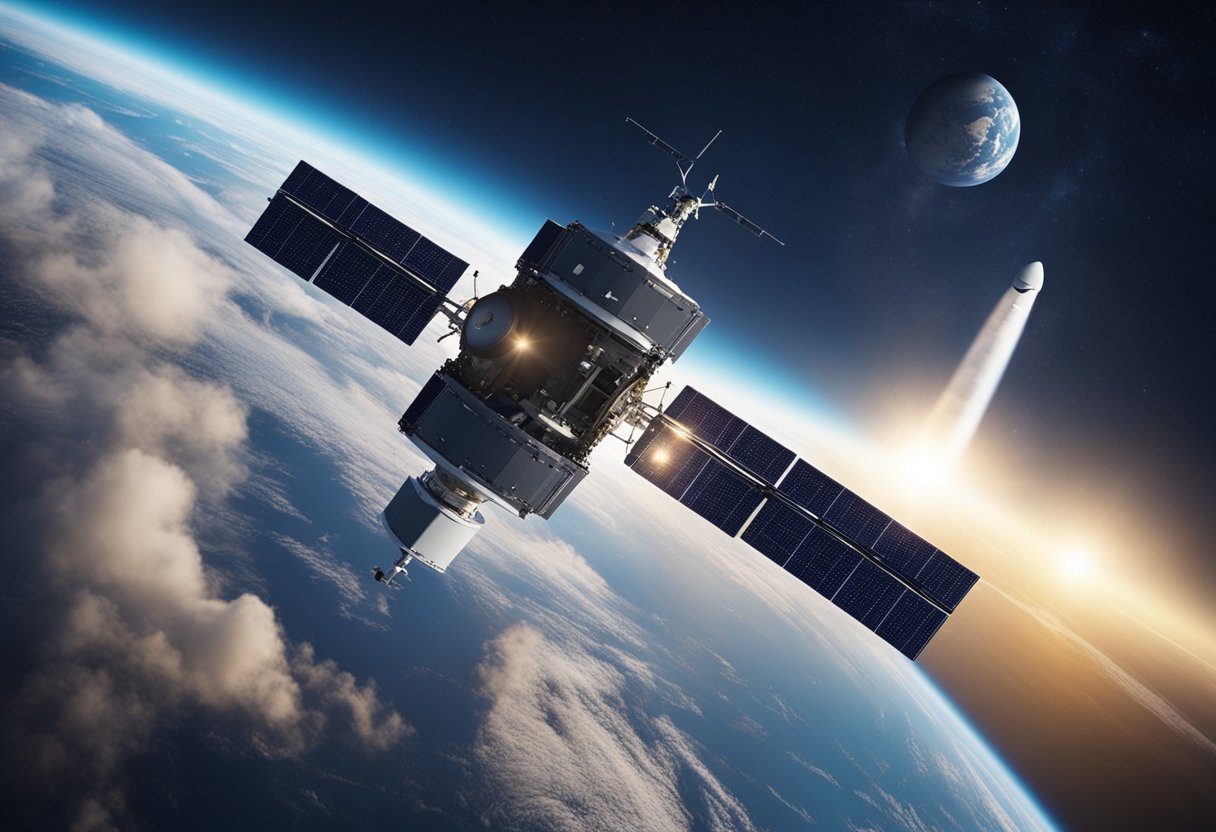
International agencies play a pivotal role in facilitating the dissemination of space-related technologies to developing countries. These institutions often act as a bridge between advanced space-faring nations and countries seeking to enhance their technological capabilities.
The Organisation for Economic Co-operation and Development (OECD) has been instrumental in shaping policies that underpin technology transfer in the space sector. By fostering dialogue amongst space economy stakeholders, the OECD ensures that space technologies can be employed to address wider socio-economic challenges. The insights shared through OECD can identify potential leverage points for space data to combat global issues, such as pandemics.
International agencies, such as the European Space Agency (ESA), undertake various initiatives to collaborate directly with developing countries. ESA’s strategy includes open tenders for feasibility studies aimed at assessing the viability of deploying satellite communications and earth observation services in these regions.
Agencies also maintain technology transfer programmes, a key aspect of which is the facilitation of contacts between space and non-space industry players. These programmes, through partnerships and nurturing entrepreneurship, aim to find down-to-earth applications for space innovations — a process resembling NASA’s tried-and-tested spin-off methodology. ESA’s approach, among other things, involves marketing space technologies, with a catalogue that boasts over 250 entries, engaging a network of 200 space companies.
We acknowledge that a more nascent industry such as space tourism offers unique challenges and opportunities for technology transfer, adding new dimensions to international cooperation.
By actively engaging in these partnerships and sharing the wealth of knowledge and technology generated by space agencies, we significantly enhance the technical prowess of developing economies. Our aim is always to support these nations in building a sustainable future where space technology is an integral facet of their advancement.
In this section, we explore the transformative impact of space technology on health and public well-being, alongside its significant advancements in agricultural practices through earth observation and satellite data.
Through innovative Earth observation techniques, we harness satellite data to monitor environmental factors that directly affect public health. This has empowered us to identify patterns and predict outbreaks of diseases, such as by tracing the conditions conducive to the spread of vector-borne illnesses like malaria. Additionally, remote areas now have access to telemedicine, thanks to satellite communications, which allows us to transcend geographical barriers and provide critical care where it’s most needed.
Agriculture has seen a paradigm shift with the integration of space technology. Our utilisation of satellite imagery helps us monitor crop health, soil quality and water resources. We can react swiftly to address any emerging agricultural issues, which in turn improves yield and sustainable farming practices. Precision farming has become a reality, as GPS systems facilitate the timely and accurate delivery of crucial information to farmers, including data on when to plant, irrigate, and harvest. This level of efficiency helps us secure food supply chains and support the growing global population.
In this section, we’ll explore how space technology facilitates advancements in clean energy initiatives and aids in the precise monitoring of climate impact. Our focus on sustainable development goals emphasises the importance of integrating energy concerns with environmental stewardship.
Space technology plays a pivotal role in propelling clean energy initiatives forward. Earth observation satellites provide us with invaluable data to identify potential sites for renewable energy sources. For example, solar farms benefit from our ability to analyse sunlight patterns, while wind farms are optimised using data on wind flows collected from space. These initiatives are crucial as they support the achievement of Sustainable Development Goals, specifically Goal 7, which aims to ensure access to affordable, reliable, sustainable, and modern energy for all.
Our capabilities in monitoring climate change have been significantly enhanced by space technology. Satellites offer a comprehensive overview of Earth’s climate systems, measuring atmospheric gases and tracking weather patterns. This allows us to better understand the effects of climate change and implement strategies to mitigate them. Leveraging data from satellites, we can witness in real-time the transformations our planet is undergoing, and subsequently inform policy and decision-making to safeguard our environment.
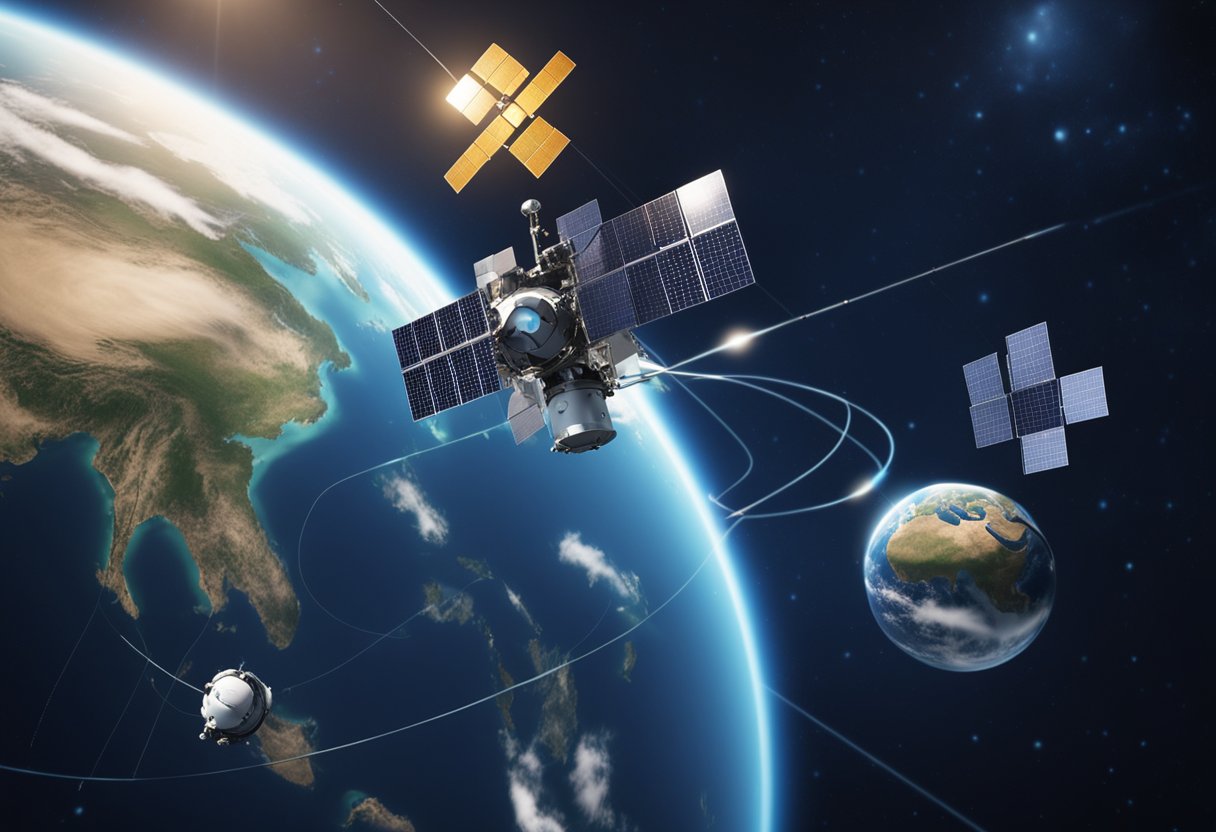
In this section, we explore the vital role space technologies play in boosting security measures, specifically how satellite communication and other space assets contribute to national defence and effective disaster response.
Satellite communication is fundamental to our defence capabilities. Space assets, which include satellites and various systems in orbit, are crucial for surveillance, intelligence gathering, and secure communication channels. They enable real-time data sharing, enhancing situational awareness and strategic decision-making. The global space sector has become an integral part of national security strategies, with countries investing in advanced satellite technology to protect their interests both on earth and in space.
The use of space technologies plays a pivotal role in managing natural and man-made disasters. Satellite imagery and communication are invaluable in disaster response and management, aiding in the coordination of relief efforts. Our understanding of sustainable development in vulnerable regions improves as we leverage these technologies for risk assessment and early warning systems. Accurate and timely information can save lives and help manage resources more effectively during a crisis.
Our engagement with space technologies not only fortifies our defences but also ensures that we utilise these advancements for the greater good, promoting sustainable development and safeguarding humanity from both earthly and space-originating threats.
As we explore the impact of space technology transfer, we recognise its significant role in fostering economic development within developing countries. By creating new markets and stimulating local economies, these transfers are instrumental in bringing about substantial economic change.
Space technology transfer can be a catalyst for creating new markets in developing countries. We see this when local entrepreneurs leverage advanced technologies to launch start-ups and enter previously inaccessible sectors. For instance, satellite technologies enable telecommunications companies to offer broadband services in remote areas, fostering new digital markets and making space-related business ventures viable.
The flow of space technology into developing economies often results in substantial stimulation of local economies. This effect is evident when we see partnerships forming between international space agencies and local firms, typically in technology sectors. Local manufacturing capabilities are bolstered when they absorb and adapt space technologies for civilian use. Additionally, partnership programmes with international entities can lead to the upskilling of workers and generate high-tech employment opportunities, creating an innovative ecosystem conducive to sustainable economic growth.
We’ve witnessed a significant shift in how space technology contributes to sustainable development, particularly within developing economies. This contribution aligns with the United Nations Sustainable Development Goals (SDGs), bringing us closer to addressing global challenges through the lens of space innovation.
Our exploration and use of space technology have profound implications for achieving the SDGs. Remote sensing satellites aid in ensuring food security, monitor climate change impacts, and assist in disaster risk reduction by providing real-time data. The benefits reaped from space technologies enable us not only to track progress but also to enhance the planning and implementation of development strategies. For instance, this understanding is echoed in the research presented by UNCTAD, where the integral role of space technologies in achieving sustainable development is highlighted.
Moreover, the contributions of space-based projects to accomplishing the SDGs are significant. By charting these contributions, we can align our strategies with the goals set forth for 2030, ensuring a more targeted and beneficial application of space technology.
An integral part of our strategy involves employing space technology to promote environmental stewardship. For example, earth observation satellites have become pivotal in monitoring and managing natural resources. By integrating this technology into our environmental management plans, we’re better equipped to address issues such as deforestation, biodiversity loss, and ocean conservation.
Our innovation ecosystem thrives when there is an open exchange of ideas and technologies among countries and organisations. Collaboration, as part of an open innovation model, enhances our collective ability to address environmental challenges. Such partnerships are essential for fostering progress towards a more sustainable and equitable global economy.
In this section, we’ll explore how incubators and accelerators are vital for nurturing space-related startups, and we’ll examine the dynamic startup landscape that has emerged in the space industry.
Incubators and accelerators play a pivotal role in propelling innovation within the space sector. These platforms offer crucial support to emerging space enterprises, especially in navigating the complex space ecosystem. Startups benefit from a combination of mentorship, resources, and networking opportunities, leading to enhanced business models and increased chances of success. Notably, many of these innovators are making significant strides in the development of CubeSats, which are miniature satellites that offer a cost-effective means of space exploration and data collection.
The startup landscape in the space industry is teeming with entrepreneurs eager to tackle the numerous challenges posed by space exploration. Utilising lean and agile business models, these startups are dramatically lowering the barriers to entry that once limited space technology to well-funded corporations and governments. A growing number of these businesses are targeting the burgeoning space tourism market, with early ventures like SpaceVoyageVentures.com documenting the progress towards accessible space travel. It’s an industry that’s witnessing a paradigm shift, where small-scale yet high-impact innovations like CubeSats are opening up new possibilities and markets.
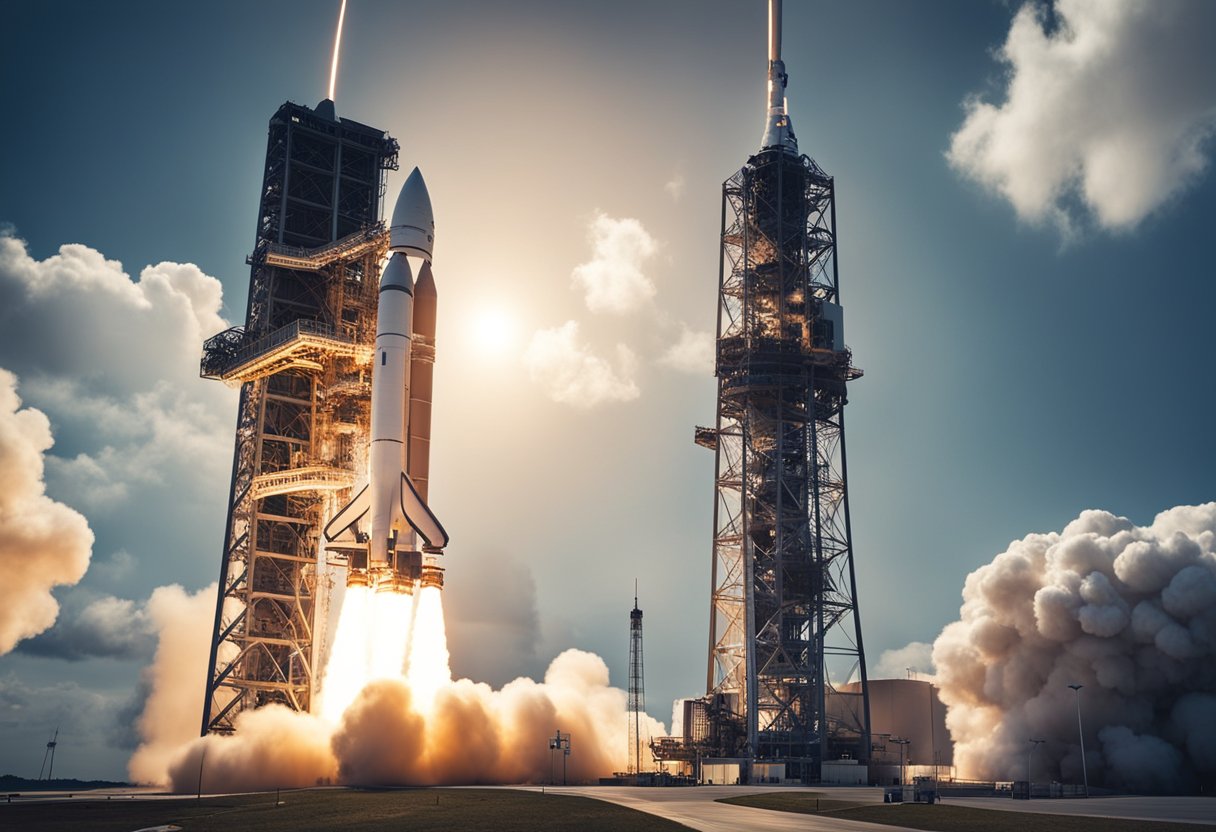
As we explore the transfer of space technology to developing economies, it is crucial to acknowledge the intricate nature of legal and intellectual property frameworks that govern patents and licensing. These considerations are fundamental in ensuring that technology transfer aids in economic growth, while also upholding the rights of the innovators.
Strong legal frameworks are essential to protect the intellectual property (IP) generated by new space technologies. In the arena of commercialisation, patents play a pivotal role in granting exclusive rights to the creators, thus incentivising innovation and investment. Our extensive work ensures the effective management of these patents by assisting with the drafting and filing process. Securing a patent is the first hurdle; however, negotiating licences is just as critical to enable the access and use of these technologies by developing economies.
Adhering to regulatory requirements is imperative in the process of transferring technology. The regulatory landscape can be complex, with multiple countries and international bodies involved. We navigate these hurdles by maintaining a clear understanding of the legal obligations in different jurisdictions. This ensures that the transfer of technology is not only beneficial but also compliant with international law.
Our expertise permits us to provide insights into the legalities of space technology transfer, considering the impact of intellectual property rights on technology transfer and economic growth, specifically for developing countries. We are also at the forefront of negotiating the legal complexities surrounding intellectual property protection in outer space which is becoming ever more pertinent as commercial activities extend beyond our atmosphere.
The future of space exploration and commercialisation, such as the endeavours documented by SpaceVoyageVentures.com, not only opens new frontiers for travel but also requires our diligent attention to the evolving legalities and the management of intellectual property to ensure a fair and equitable advancement in space technology.
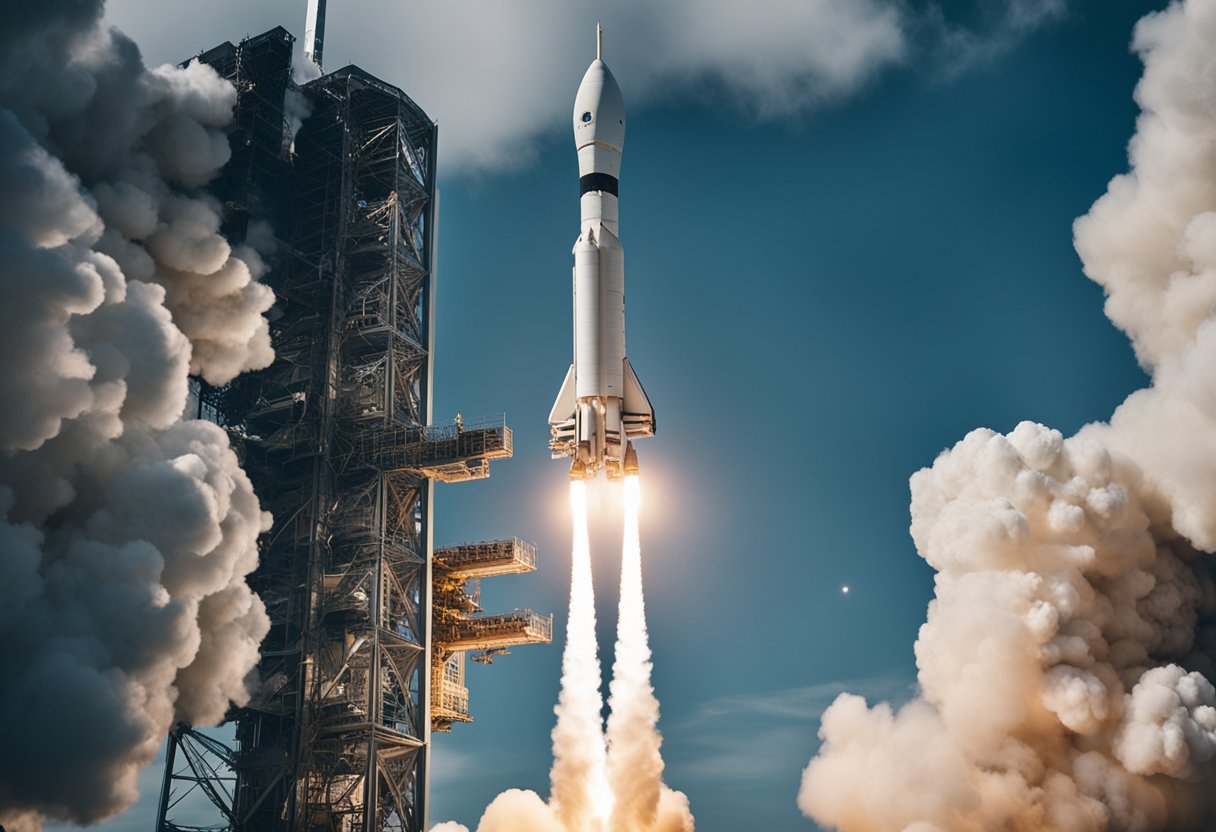
In examining the landscape of space technology transfer, we observe notable achievements where groundbreaking innovations have been adapted for broader applications, especially within developing economies.
In Iran, we’ve seen a strategic push towards space technology transfer, where research institutes have played a pivotal role in navigating the complexities of acquiring and localising space technologies. A case study on the transfer of space technologies in Iran highlights not only the successful adaptation of these technologies but also emphasises the critical drivers and constraints impacting their success.
Leveraging this technology, these research entities have catalysed advancements in several sectors, effectively enhancing the country’s technological capabilities and economic resilience. It’s a testament to how targeted efforts in technology assimilation can yield tangible benefits.
Case studies from various regions have elucidated key lessons:
For instance, the European Patent Office showcases how patents facilitate technology transfer, leading to successful commercialisation and market success in various economic sectors. These case studies demonstrate the importance of a well-structured approach that includes recognising the intellectual property rights that often accompany such transfers.
In our evaluation, we acknowledge the significance of deliberate and well-coordinated actions to achieve the desired outcomes of technology transfer. Through strategic implementation and adaptation, emerging economies can substantially benefit from the high-tech competencies developed within the space sector.

In our exploration of space technology transfer, we recognise its critical role in shaping the development trajectory of emerging economies. The following are some of the most frequently asked questions about how space technology is shared with and utilised in less developed economies.
Typically, space technology reaches less developed economies through collaboration with international space agencies and participation in technology-sharing programmes. For example, the United Nations Office for Outer Space Affairs aids in capacity building in space technology for these nations.
The integration of space technology often leads to advancements in areas such as telecommunication, earth observation, and resource management. These advancements can boost various sectors of the economy by improving efficiency and providing new opportunities for innovation and growth.
Mechanisms such as bilateral agreements, technology partnerships, and international development programmes enable the transfer of space technology. The OECD provides insights into technology transfers and commercialisation, outlining successful practices across different regions.
Space exploration can contribute to growth by providing developing countries with access to satellite data and technologies. This data can be invaluable for monitoring climate change, managing natural disasters, and enhancing agricultural practices.
International cooperation is essential to facilitate the transfer of space technology. It often involves partnerships between nations, support from multinational organisations, and guidelines established by entities like the Organisation for Economic Co-operation and Development.
By acquiring space technology, developing countries can improve their infrastructure, increase their resilience to environmental challenges, and take part in high-tech markets, potentially elevating their standing in the global economy.